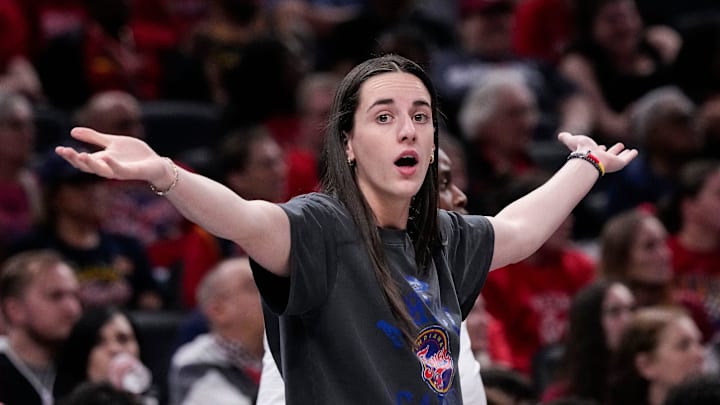The Indiana Fever signed former Los Angeles Sparks guard Aari McDonald, adding more backcourt depth to their roster. Normally, this move wouldn't be seen as a big deal. McDonald was waived by the Sparks prior to the season after averaging 8.7 points and 3.7 assists per game in 26 appearances in the 2024 campaign. She presumably won't play much. The fact that she was signed using a hardship exemption, though, is a big deal.
Indiana's roster is in such a state of flux to the point where the Fever had to use a special WNBA roster rule just to field an appropriate number of players for a given game.
What is a WNBA hardship exception?
The Fever signed McDonald using the hardship exception, a rule which essentially grants teams the ability to sign a player immediately after they dip below 10 available players.
For Indiana, Caitlin Clark has been out with a left quad strain, and both Sophie Cunningham and Sydney Colson left Friday's game against the Connecticut Sun with injuries of their own. These injuries brought the Fever to nine healthy players on their active roster.
While the Fever might not use more than eight or nine players in a given game, it makes sense for them to want as many active players as possible. This rule ensures that they, and any other injury-riddled team, can roster 10 players without having to worry about cap space or other roster rules.
How does the WNBA hardship exception work?
As mentioned prior, the point of this exception is to give teams the right to roster 10 players if injuries start to pile up. With that in mind, the way the hardship exception works is quite simple. When a team has fewer than 10 available players, they're allowed to immediately sign a player using the hardship exception to get to 10 players.
Cap space doesn't factor in with hardship exception players. The only rule is that the team must have fewer than 10 available players to be able to use the hardship exception correctly. Once 10 playes on standard deals are healthy, the hardship exception player will have to either be given a standard contract or be waived.
Why doesn’t the WNBA just expand roster limits?
This is the million-dollar question. If this is such an issue, why doesn't the WNBA just expand its roster limits? To be completely honest, I have no idea why.
The NBA has 15 standard roster spots and another three openings for two-way players, giving them 18 roster players in total. The WNBA has 12 roster spots. Sure, there might not be as many teams and as many available players, but they don't even have to go as high as the NBA. If this is an issue, why doesn't the WNBA raise its active roster limit to 14 or 15 instead of 12? There's no downside, and it would lessen the need for teams to use the hardship exception.
Which WNBA teams have used hardship exceptions this season?
While the Fever might be the most notable team to use the hardship exception, they aren't the only team to have used it. The Phoenix Mercury have been without Kahleah Copper all season, and recently just lost Natasha Mack and Alyssa Thomas to injuries of their own. With that in mind, they signed former first-round pick Haley Jones to a hardship contract. Jones, a Stanford star who was waived just days before the WNBA season began, is now getting a fresh start in Phoenix, hoping to prove she belongs.
Only two teams have used it so far, but we're also fewer than 10 games into the year. The fact that teams are already resorting to what should be a last resort this early in the year is alarming and shows that changes must be made to the WNBA's roster rules.
